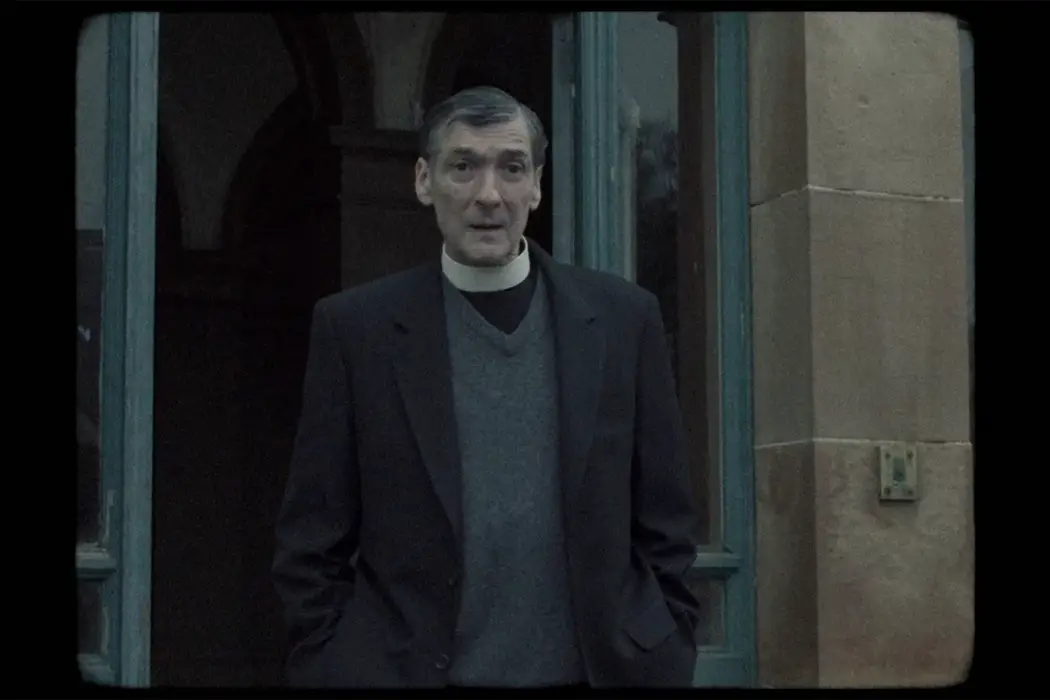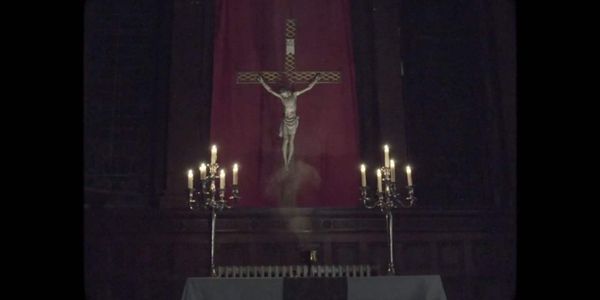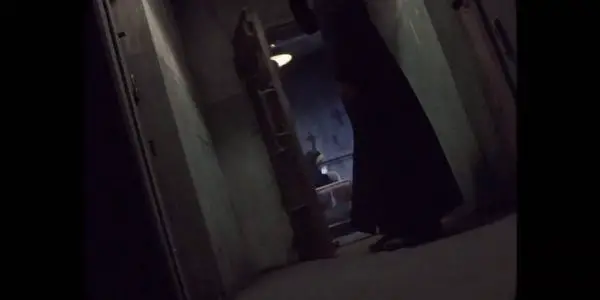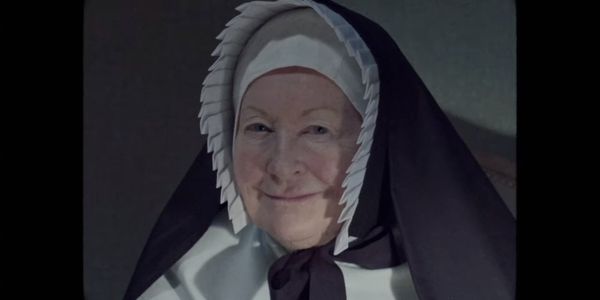THE DEVIL’S DOORWAY: An Effective Chiller, Even if A Little By-the-Numbers

I'm a creative writing graduate who likes horror and things…
The Devil’s Doorway is the latest found footage joint the world of cinema is offering us. It’s writer-director Aislinn Clarke’s first full-length feature, and it tells the story of two priests who travel to an Irish ‘Magdalene Laundry,’ a place where troubled women—primarily “fallen women,” a euphemism for prostitutes or women pregnant out of wedlock—were housed. These Magdalene Laundries were mostly owned and managed by the Catholic Church, and they have a very dark history; in 1993, 155 bodies were found buried underneath the site of a graveyard which was being renovated to be used as part of a housing development.
So, although The Devil’s Doorway is based on reality, the film hinges on a very common fiction for the genre: the two travel to a particular Magdelene Laundry to investigate a statue of the Virgin Mary whose eyes inexplicably cry blood. Is it a miracle, or isn’t it? That’s what our protagonists are there to investigate. However, when they arrive, they soon discover that everything is not as it seems in the place. On top of that, the two start to believe the Mother Superior (brilliantly played by Helena Beeren) is hiding something.

One of the protagonists, Father Thomas, seems to be struggling with his faith somewhat (and is convinced the ‘miracle,’ like all others, is a hoax). His younger sidekick, Father John, is much more idealistic and believes in the possibility that something divine is happening.
Old-Fashioned Aesthetics Moving the Genre Forward
Despite the familiar story, The Devil’s Doorway does have an original hook, which is that the film is set in 1960, and is styled as if it was shot on an old-timey video camera, the image cutting out every now and then to be replaced by large cigarette burns and swathes of neon colour. It’s the kind of thing that could end up being gimmicky, but it does add an air of authenticity to the film which is normally devoid in found footage films, and usually the genre’s main flaw—how can something which is supposed to look more realistic than the average film be less so? Fortunately, that’s not a problem with The Devil’s Doorway.

However, unfortunately, for all of the attention placed on its visual style and the aesthetic detail of its period, The Devil’s Doorway does hit a lot of beats which will be very familiar to long-time fans of the found footage genre. There are a fair few jump-scares, and others which have been lifted straight from The Blair Witch Project: the seemingly-omniscient sound of children laughing, the bloodied hand-prints, the narrow, claustrophobic corridors. While you’re watching, it’s hard to get rid of the sense that they’re things which you’ve seen many times before.
Rehashing Old Tricks
The film starts promisingly, as a kind of Gothic mystery film along the lines of a Daphne du Maurier adaptation, but towards the end dwindles into something far more generic, and not altogether coherent. All of the psychological and social tensions of the first half dwindle into a lazy, occult-type story. A kinder person would describe the ending as ‘ambiguous,’ but in truth, I don’t think the filmmakers were able to resolve the story set up in the first half, and allowed it to descend into a weak final act, which is typified by narrow corridors and relentless shaky-cam which makes it impossible to tell what is attacking the protagonists and when.

Having said that, the entire cast is very committed to The Devil’s Doorway, and having a cast and crew who believe in the film they’re making can go a long way in terms of its quality. Lalor Roddy, who plays Father Thomas, gives a particularly fine performance, and his character is the one with the most depth. It’s interesting to see how his composure and confidence dwindle as he starts to realise that, in fact, there is something going on in the Magdelene Laundry.
Both he and Ciaran Flynn do their best with the material they’ve been given, too, and you do get the sense that the two are colleagues and share some history together, even if Flynn’s character is a little underdeveloped.
Conclusion: The Devil’s Doorway
The Devil’s Doorway is effective up to a certain point, but ultimately it squanders all of the potential set up in its first act in lieu of a very by-the-numbers foundfootage horror. Still, the film isn’t without its effective scares, and long-time fans of the found footage genre will find something to enjoy in the film, even if the only fresh aspect of the film is its cinematography.
What are your thoughts on The Devil’s Doorway?
The Devil’s Doorway will be released in the U.S. on July 13, 2018.
Does content like this matter to you?
Become a Member and support film journalism. Unlock access to all of Film Inquiry`s great articles. Join a community of like-minded readers who are passionate about cinema - get access to our private members Network, give back to independent filmmakers, and more.
I'm a creative writing graduate who likes horror and things which are politically and socially conscious. When I want to escape reality, I watch Edgar Wright films. I also read a lot.













